Croatia alone is said to have 270 indiginous grape varieties. The republics of the former Yugoslavia are a fascinating repository of these, of winemaking traditions and above all, of potential. Already Slovenia is being absorbed into the world mainstream thanks to its proximity to Italy and not least thanks to its role in cross-border winemaking during the time of socialist Yugoslavia. The Slovenes certainly know how to value their wines and charge accordingly.
A good example of what to expect from the less well known regions is what has happened to Laski Rizling. This really was at the bottom of the pile in the Cold War days - something even less enticing than Liebfraumilch if memory serves. Today we are aware this sorry concept is in fact Welschriesling or Riesling Italico, from which ever more really wonderful wines are been made in Austria in particular and many east European countries where its synonyms include Olasz Rizling (Hungary), Vojvodina (Slovenia) and Vlassky Rizling (Slovakia). Vlassky or Laski refers to Wallachia/Romania, hence Welsch. It is not related to Riesling. In Croatia, it goes under the altogether more melifluous name Grasevina and produces delicious wines a million miles away from supermarket Laski Rizling of the 1970s.

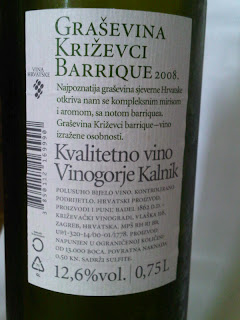
Then there is Crljenak Kastelanski which has been confirmed as the original Zinfandel. In our brief but promising preliminary skirmish with the wines of Croatia, nowhere did we come across a Crljenak Kastelanski, a Primitivo (which was fancied at one time as the origin of Zinfandel but turned out no so to be) or a Zinfandel for that matter. What is ubiquitous is a near relative, Plavac Mali, now starring in a Waitrose near you but none the worse for that.
The most popular white variety is Posip. This with its near namesake Sipon is nothing else but Furmint and none the worse for that either.
Beyond Plavac Mali, Grasevina and Posip are of course 267 other varieties. We got just a little bit further into these with a Babic bought, like the Grasevina at Split Airport Duty Free and yet to be tasted,
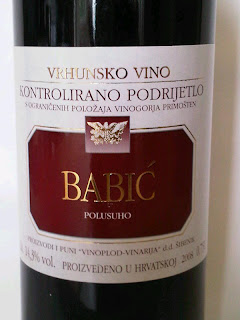
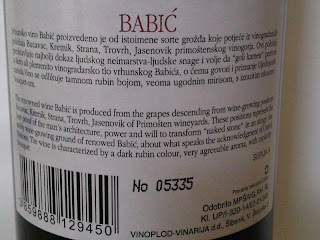
a wonderful Malvazija Istarska by the glass at the excellent Sesame Restaurant, Dubrovnik - a real eye opener this, a Grk from the island of Korcula (our sample altogether too rustic), another white from the island of Krk called Zlatna, made from the Zlatina variety (more promising)
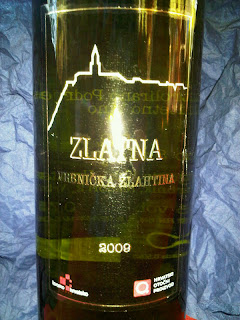
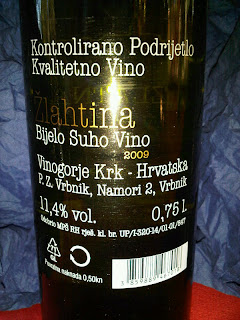
and something called Teran which got us needlessly excited, turning out not to be one of the by now 264 remaining varieties but our old friend Refosco. We should have remembered the bottle of Terrano we bought at Per Bacco in Milan which turned out to be the local name for Mondeuse as we were told there. Mondeuse used to be thought of as being nothing other than Refosco but this is now in doubt, so most probably both Terrano and Teran = Refosco.


This version by Kozlovic was a delight.
So things are on the move. Having left Croatia in 1954, Mike Grgich of Grgich Hills, California fame

has returned to teach young winemakers and has an operation of his own there. Just how far there is still to go was demonstrated for us by the wine of the beautiful island of Vis.
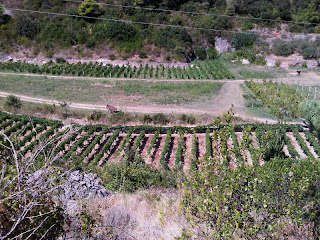
In the ancient world, the wine of this small island (known by the Greeks as Issa) was said (by Athenaios) to be 'the best, compared with all the others'. This is most definitely not the case today. Viticulture on Vis dates back therefore well over 2,000 years. Before the First World War, production was 53 million gallons a year. The island has suffered since. Until 1989, it was a military zone. Some of the vineyards were even blown up in manoeuvres - certainly a common sight is piles of stones which look as if they came from ruined terraces. Nevertheless, attempts are being made to revive viticulture and winemaking. They even have at least one native grape variety, Vugava (aka Bugava) and possibly a second one called Kurteloška, both white, both of which which we managed to miss.
We tasted a Plavac Mali from a vineyard on the island which according to Google, may now, sadly be for sale.
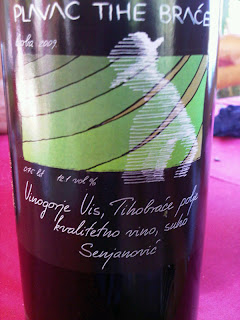
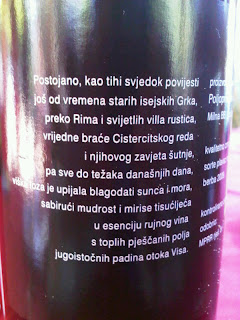

If the tiny island of Vis has its own grape varieties and there are a thousand islands, the countries of the former Yugoslavia are rich indeed. Let's hope these grape varieties are not allowed to die out even if the names are challenging - Dingač, Gegić, Maraština, Turbijan, Bogdanuša, Puljižanac, Zilavka, Ranac Silbanjski...
